
AIN: The Arabic INclusive Large Multimodal Model
Ahmed Heakl *
Sara Ghaboura *
Omkar Thawakar
Fahad Shahbaz Khan
Hisham Cholakkal
Rao M. Anwer
Salman Khan
*Equal Contribution
Mohamed Bin Zayed University of Artificial Intelligence (MBZUAI), UAE
Abstract
Amid the swift progress of large language models (LLMs) and their evolution into large multimodal models (LMMs), significant strides have been made in high-resource languages such as English and Chinese. While Arabic LLMs have seen notable progress, Arabic LMMs remain largely unexplored, often narrowly focusing on a few specific aspects of the language and visual understanding. To bridge this gap, we introduce AIN - the Arabic Inclusive Multimodal Model- designed to excel across diverse domains. AIN is an English-Arabic bilingual LMM designed to excel in English and Arabic, leveraging carefully constructed 3.6 million high-quality Arabic-English multimodal data samples. AIN demonstrates state-of-the-art Arabic performance, while also possessing strong English-language visual capabilities.
🌟 Key Features
- The first Arabic-centric inclusive Large Multimodal Model (LMM) trained on 3.6M samples.
- Includes 35% authentic Arabic data within its Arabic data subset.
- Achieves superior performance compared to open- and closed-source models (e.g., GPT-4o) and open-source models (e.g., Qwen2-VL-7B) across tasks such as OCR and specialized domains.
- Demonstrates robust bilingual capabilities (Arabic/English), validated through comprehensive testing and human evaluation across 17 Arab countries.
- Exhibits advanced cultural understanding and domain expertise in fields such as medical imaging, agriculture, and scientific visualization.
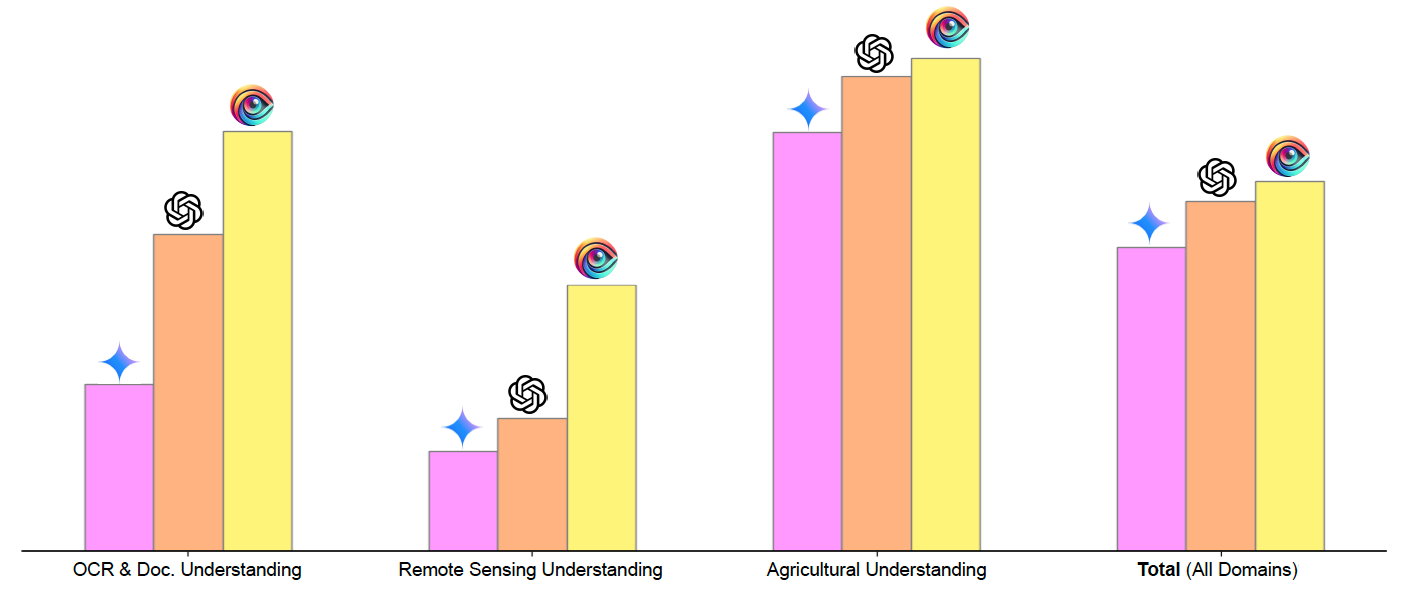
Figure 1. Comparative performance of AIN-7B against other models across key domains, including OCR & Document Understanding, Remote Sensing, Agricultural Understanding, and overall performance across all domains.
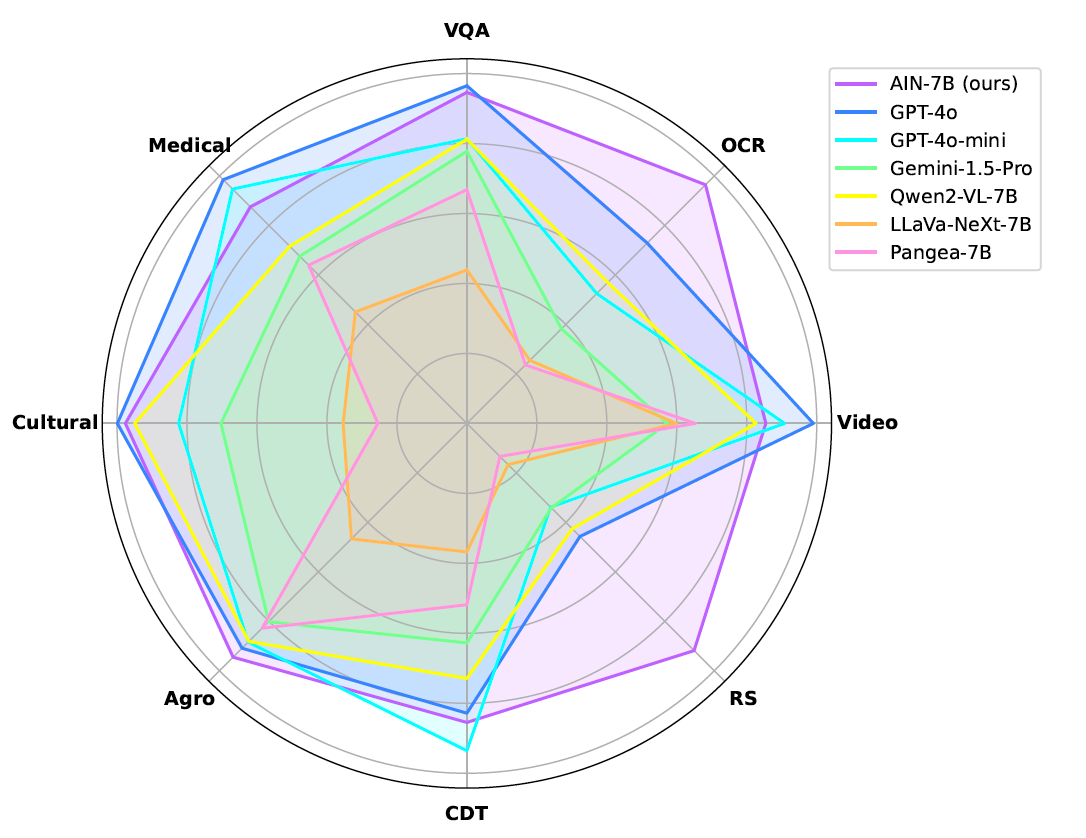
Figure 2. showcases a comprehensive performance analysis of AIN-7B across CAMEL-Bench domains, comparing it with prominent closed-source models as well as open-source counterparts. OCR: "OCR & Document Understanding", Video: "General Video & Multi-Image Understanding", RS: "Remote Sensing Understanding", CDT: "Chart, Diagram & Table Understanding", Agro.: "Agricultural Image Understanding", Cultural: "Cultural-Specific Understanding", Medical: "Medical Image Understanding".
⚖️ Quantitative Evaluation and Results
AIN demonstrates state-of-the-art performance across diverse domains, surpassing both open- and closed-source models. Notably, it achieves an aggregate performance score of 63.77%, with significant gains in OCR, remote sensing, and agricultural image understanding.
| Models | VQA | OCR | Video | RS | CDT | Agro. | Cult. | Med. | Total |
|---|---|---|---|---|---|---|---|---|---|
| GPT-4o | 🥈55.15 | 🥈54.98 | 🥇69.65 | 🥈27.36 | 🥈62.35 | 🥈80.75 | 🥇80.86 | 🥇49.91 | 🥈60.13 |
| GPT-4o-mini | 48.83 | 39.38 | 🥈66.28 | 16.93 | 56.37 | 78.80 | 65.92 | 🥈47.37 | 52.49 |
| Gemini-1.5-Pro | 46.68 | 28.68 | 42.95 | 17.07 | 47.06 | 72.14 | 56.24 | 33.78 | 52.38 |
| Gemini-1.5-flash | 45.59 | 27.58 | 53.31 | 14.95 | 48.26 | 76.07 | 46.54 | 42.87 | 44.40 |
| InternVL-8B | 30.41 | 15.91 | 51.42 | 5.36 | 30.27 | 44.47 | 20.88 | 29.48 | 28.52 |
| InternVL2.5-1B | 27.22 | 19.45 | 38.20 | 3.39 | 30.75 | 39.53 | 35.68 | 21.27 | 26.94 |
| Qwen-VL-2B | 41.02 | 22.93 | 38.90 | 12.56 | 27.83 | 52.02 | 34.28 | 29.12 | 32.33 |
| AIN-7B (ours) | 🥇56.78 | 🥇72.35 | 64.09 | 🥇45.92 | 🥇64.10 | 🥇85.05 | 🥈78.09 | 43.77 | 🏆63.77 |
🎯 Qualitative Evaluation
The qualitative evaluation showcases AIN's advanced capabilities in handling diverse, complex tasks, including OCR, medical imaging, remote sensing, and cultural-specific understanding, with remarkable precision and contextual relevance. Unlike GPT-4o and LLaVA, AIN demonstrates superior performance in identifying intricate details and maintaining accuracy across varied query formats and multi-domain challenges.
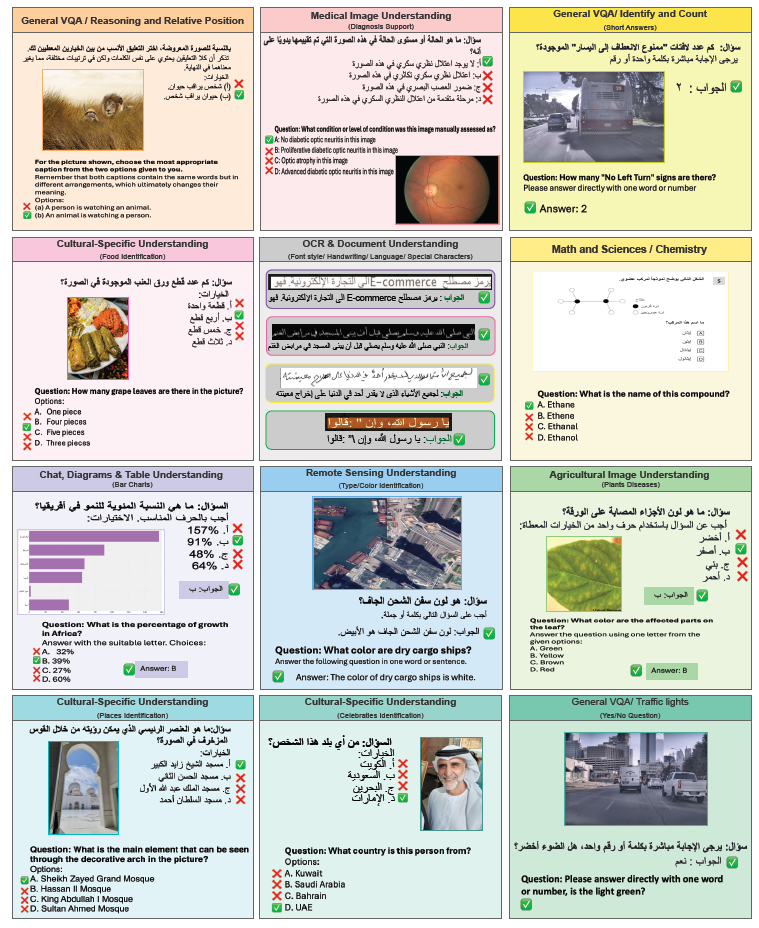
Figure 3. Qualitative examples showcasing AIN-7B’s capabilities across various domains, including general VQA, OCR & Document Understanding, Remote Sensing, Medical Imaging, Agricultural Understanding, and Cultural-Specific tasks.
🧐 Data Verification and Toxicity Filtering
A multi-step verification pipeline was implemented to ensure high-quality translations and safe visual data. Translation accuracy was assessed through human evaluation, where native Arabic speakers rated outputs against reference translations, and semantic similarity checks were conducted using LaBSE. Additionally, translated samples were reverse-translated and validated using BLEU, METEOR, and ROUGE scores to measure correctness, correlation, and overlap. For visual data, toxicity filtering was applied using LLavaGuard’s safety policies and GPT-4o, identifying and removing unsafe content related to violence, substance abuse, and harmful imagery, ensuring compliance with ethical AI standards.
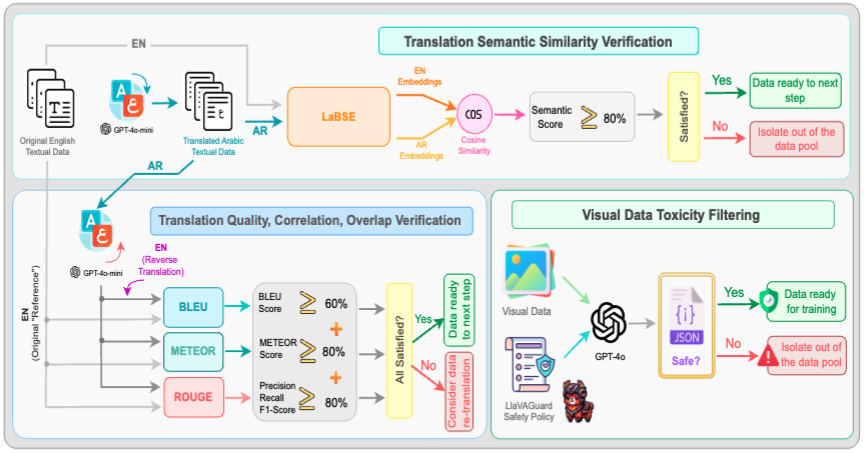
Figure 4. Data verification and filtering pipeline for textual and visual data, ensuring high-quality training data through semantic similarity checks, translation quality evaluations, and toxicity screening for safety compliance.
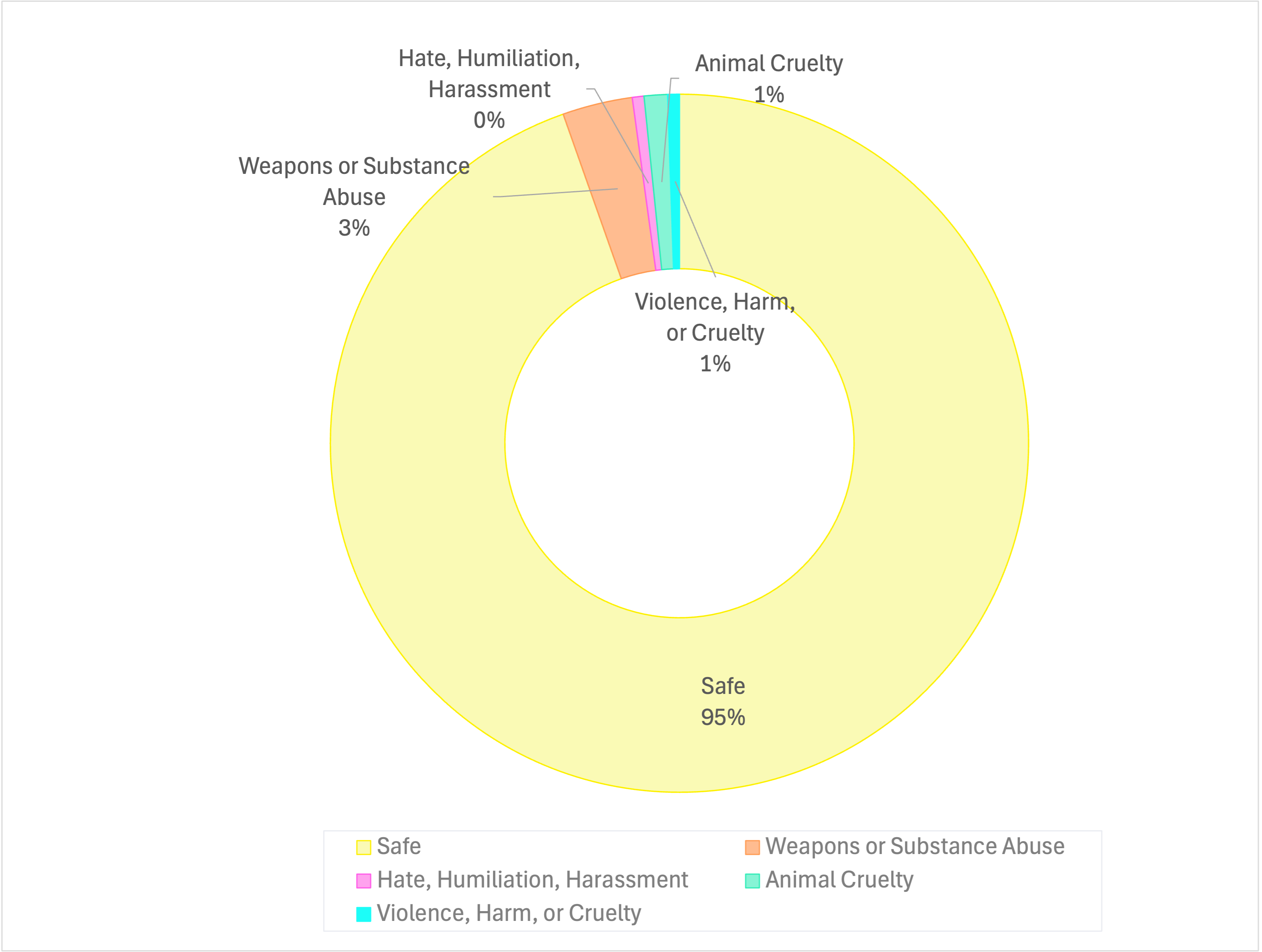
Figure 5. Distribution of visual data toxicity filtering results, showing that 95% of the data is classified as safe, while 5% is identified as unsafe due to categories like weapons or substance abuse, violence, and animal cruelty.
🔒 License
This project is licensed under the MIT License - see the LICENSE file for details.
💬 Contact us
For questions or suggestions, feel free to reach out to us on GitHub Discussions.
If you use AIN in your research, please cite our work as follows:
@misc{heakl2025ainarabicinclusivelarge,
title={AIN: The Arabic INclusive Large Multimodal Model},
author={Ahmed Heakl and Sara Ghaboura and Omkar Thawkar and Fahad Shahbaz Khan and Hisham Cholakkal and Rao Muhammad Anwer and Salman Khan},
year={2025},
eprint={2502.00094},
url={https://arxiv.org/abs/2502.00094},





